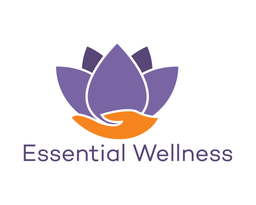Hmm, before you continue please note this is a long page
This is is super long, and was written by our Physio and is packed with useful information. It might be a bit much to digest in one go. Request your digital copy and we'll send it you via email to read at your leisure.
Managing life with Knee Arthritis
Knee arthritis affects 6% of the population with the NHS reporting 10 million suffers in the UK. With varying symptoms from none at all to hot swollen joints that are constantly stiff and painful, every person with arthritis manages their condition as best they can. There is no cure, however, there is a lot that you can do to help living with arthritis knee pain. Let’s explore arthritis in the knee some more.
What is knee arthritis?
Osteoarthritis in the knee is the most common form of arthritis. It is what most people refer to when they talk about arthritis in the knee, a long term form of wear and tear damage over time. Most commonly affecting those over 50 years old but can affect those younger. Referring most commonly to the wearing of the cartilage and surfaces of the joint, including a narrowing of the joint space between the two bones that make up the knee.
There are 3 bones that make up the knee; the top of the knee is formed by the femur (the thigh bone) which has two rounded surfaces that are joined by ligaments to the tibia (shin bone) which is flatter surface. To allow the bones to move on one another the top of the tibia is covered in more fibrous, thicker connective tissue known as the meniscus, we have one for each surface of the femur. This is the hinge joint of the knee which gives us the ability to bend and straighten our knee. Sitting on top of this joint is one with the kneecap (patella), it sits within the tendons that come from the quadriceps muscles (front of thigh) to the top of the tibia to straighten our knees.
There is a lot going on in this joint! And over time that activity causes wear and tear, some people may have accidents or damage over time that leads to tears in the cartilage which thins over time, particularly with knee arthroscopy surgery (removing tears in the meniscus). You can begin to get symptoms with mild changes to the joint, particularly if you’re not a person who is regularly active. Others may begin to develop more pain when sitting and coming downstairs, this would indicate to more of a knee cap related problem.
Stages of Knee Arthritis
Stage 1 - Minor
In stage 1 arthritis of the knee there are small and mild changes, minor wear and tear changes might be seen, with occasional or no symptoms. Low level bone changes may occur, like very small bone spurs which may or may not be easily seen on an x-ray. It’s likely that you still wouldn’t need any treatment at this stage, but now is a good time to think about creating a leg based strength and exercise programme.
Stage 2 - Mild
Worsening of the symptoms are seen in Stage 2 arthritis, with perhaps more frequent pain or discomfort. You’re likely to feel more stiffness in the joint and symptoms that are worse at the start and end of the day, particularly if being active. On x-ray there may be further bone growth but the joint space will still be maintained.
Stage 3 - Moderate
With moderate arthritis, in an x-ray may start looking now that there is less space between the bones. Your pain may be more frequent or severe and you might be experiencing painful swelling. The behaviour of your knee may also be less predictable, it may flare up with the slightest use and take days to settle. At these stages you would want to consider strategies around pain management, wearing support to reduce joint strain and regular hot and cold packs.
Stage 4 - Severe
In severe knee arthritis your joint space is particularly narrow and there is some bone-to-bone contact which is audible when moving. There is likely to be a loss of cartilage and pain and stiffness with moving around. At this point you might be talking to a consultant about looking at surgical options and we’d definitely recommend exercise under the supervision of a physiotherapist and activities that you can manage to keep you healthy.
Symptoms of knee arthritis
Pain
The most common symptom you might have with arthritis is pain, it may be occasional at first, only feeling it after strenuous activity or exertion. We all suffer from wear and tear just being alive! And being active doesn’t mean that arthritis is more likely to happen for you than people who are less active. If fact active people are better off when it comes to wear and tear than those who are less active.
Pain is different for everyone with arthritis and it can be hard to hear advice from everyone who’s ever had knee pain and what helped then, as there are so many of us! If you knee pain has started suddenly and related to an accident or fall or if you find that your knee has got significantly worse in a short space of time, you may need to visit your GP or physiotherapist for assessment.
Pain in knee arthritis is due to the wear and tear on the joint surfaces than narrow the joint space over time. In severe arthritis or grade 4, there is likely to be bone-on-bone contact, where minimal or no joint space is maintained, so all movements may be painful. At this point, pain is to be managed and wearing a support on a daily basis may be one of the few things you can do to cope.
Stiffness
A reduction or difficulty in your knee movement is another common symptoms in arthritis. It may be that you wake up in the morning with a feeling of stiffness around the knee and knee cap, a feeling that you know you haven’t moved all night. This type of stiffness commonly eased within the first few hours of waking and can be helped by a good morning routine of gentle exercises before you get out of bed and a warm shower or bath.
Others with knee arthritis may find that their stiffness begins to set in later in the day and is related to how much activity they do during the day. If you suffer with this type of stiffness then looking at your overall fitness and exercise routine should help you knee cope better with the stresses and strains on the day as being stronger and fitter will reduce the joint pressure. Remember not just to rest your knee at the end of a long day but gently keep it moving throughout the evening so it doesn’t stiffen more overnight.
If you are finding that your stiffness is caused a reduced range of movement, especially if you are unable to fully straighten your knee then do see your GP or physiotherapist for additional advice and support to get your knee range of movement back, which is essential for your walking and day to day activities.
Weakness
Over time, pain can result in you doing less and moving your knee less. You may have even cut down on activity believing this will help manage the symptoms - this strategy can be greatly effective in the short term however of months and years this can lead to your knee becoming weaker and the knee muscles gradually weaken over time.
This can also happen suddenly, that you don’t trust your knee or it begins to feel like it will give way if you put too much pressure onto it, if this is the case it is often caused by the pain you are struggling with. As the brain responds to signals from the knee, and you feel pain, the brain switches the thigh muscles off almost as a protective or reactive mechanism. This means the knee gives way and you might have even had a few ‘near-miss’ falls because of it. Its unsettling and unfortunately can lead to those with arthritis being even less active!
For weakness and giving way, a regular exercise routine is recommended for the long term strengthening of the muscles and protecting of the knee joint. Before your knee feels strong enough to cope with this by itself we recommend using a knee support to avoid any knee giving way.
If you have stage 2 knee arthritis, you would benefit from wearing the Essential Wellness Knee Support
for any increase in your usual activity, gym exercises and strenuous activity. This will give you all round comfort and protection from giving way and reduce any additional strain going into the knee. For stage 2 arthritis you are less likely to need to wear a knee support for the rest of the time but you may find that it helps you feel confident and keep going rather than fatigue making your knee pain worse.
If you have stage 3 or 4 arthritis or have pain more constantly and it’s stopping you from doing the things you love, then wearing a knee support will return the freedom to your knee and increase your happiness. At this stage you might feel like coming down the stairs is painful and can feel unsteady or other everyday tasks like kneeling, squatting and getting out of your car. If these are hurting you then an Essential Wellness Knee Support
can be with you every step of the way.
We’re sorry for those who have to deal everyday with giving way at weakness stage 3 or 4 of arthritis, where you don’t trust your legs to carry you about. Or if giving way means you are falling, we hate to think anyone is having to live daily with knee arthritis like this, lacking the support their knee requires. That’s why we also have a more rigid brace that can give stability and confidence where you need it most. The Essential Wellness Hinged Knee Brace
prevents strain from side to side, keeps your knee aligned as much as possible, even if your knee shape has changed. It can be worn snuggly all day to keep you on the go.
Swelling
Another common symptom in knee arthritis, even in early staging the body will be trying to protect the joint with swelling. If you find your knee is getting hot after activities this is also a sign of more active swelling and inflammation. At these times we’d always recommend reverting back to a cold pack routine to reduce the heat and ease the pressure of the swelling. You might also want to measure your knee swelling to see if it changes over time, it may even be a warning sign of periods of more pain with your arthritis.
Swelling can be defined as, an abnormal enlargement of the body, typically as a result of an accumulation of fluid. In the knee this fluid could be a build up to protect the joint surfaces, it may come on as a reaction to something or gradually stir up over time. Or it could be an active inflammation that has happened as a result of a fall or injury, more commonly this is associated with heat in the knee as well.
Regardless of what it causing your inflammation it can make the knee joint even more painful! If it’s stopping you from moving your knee within the usual range of movement think about using the Essential Wellness Compression Knee Sleeve
and get that swelling under control. If it hasn't settled in 2-3 weeks please get advice from your local Pharmacist, GP or physiotherapist who will be able to advise you in the ways you can get it under control.
Maintaining a healthy lifestyle with knee arthritis
If you are experiencing early symptoms of mild arthritis with mild pain and some stiffness you are one of many who tries to continue living life as normal. Good news is there are several things you can do to improve your symptoms.
You may not always feel like exercising if your knees are sore, however getting up and moving them will help.
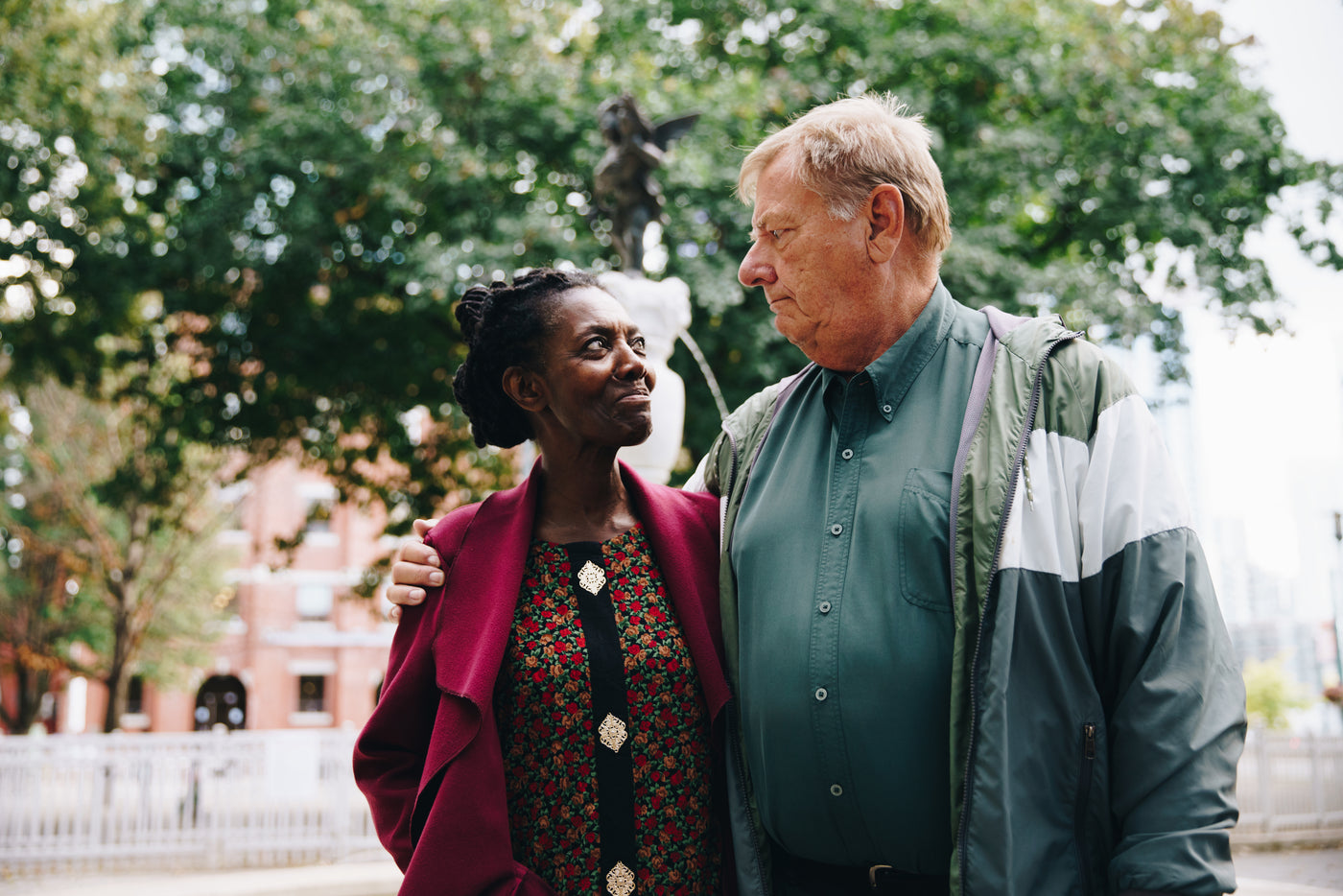
Walking
Walking is the simplest way to get into exercise for your arthritis. Starting at a steady pace and build up 3 key things: frequency, time and speed. When you first start walking you may find that you get a few more aches and pains, you’ll build off up time, first of all, perhaps starting with a weekly walk and then begin to build up in frequency. How many walks are you doing at the moment?
As you build up stamina and are able to walk in regular 20 minute or longer intervals you may want to start thinking about speed. If you quicken your pace you’ll find you begin to get out of breath and your pulse quickens. Brisk walking helps your heart so your general health will improve, stairs will be easier and you may find daily tasks become easier too.
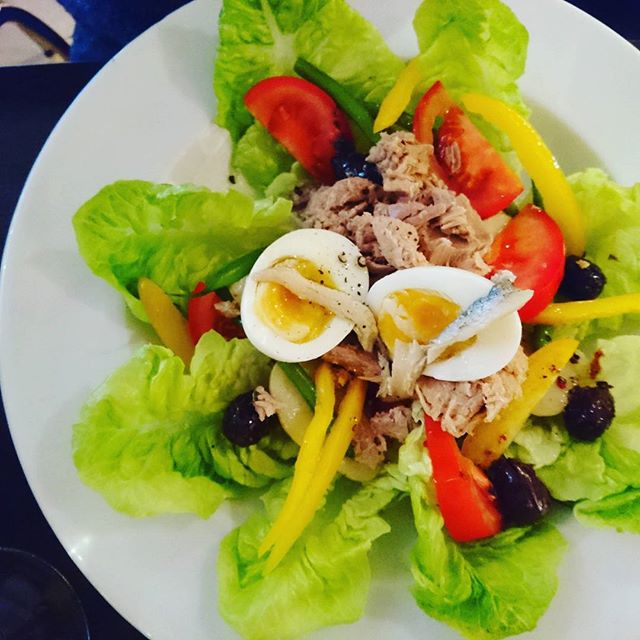
Healthy Diet
The food we choose to eat cannot be underestimated. What we put into our mouths keeps our bowels, muscles and brains healthy. Getting a variety of foods in our diet can sometimes be challenging, but reducing our intake of processed and salty foods can greatly support the body to keep the joints healthy. Some people benefit from turning to supplements to boost essential vitamins and minerals.
When we give the body what it needs it often rewards us by reducing inflammation, improving sleep and easier weight loss. For every extra pound you carry, you put 4 times more pressure into your knees. That’s got to be incentive enough to improve our diets in small ways for big gains.
We also can’t talk about diet without talking about hydration. With the body being 80% water we shouldn’t overlook the importance of drinking more than 6 glasses of water per day. Even including hot drinks, do you think you’re getting enough? By ensuring your body is hydrated you can enjoy for supple joints, reduced stiffness and an overall increase in concentration and wakefulness.
Managing a flare-up of knee arthritis
Everybody's knee arthritis symptoms can vary and it's common to go through flare ups. At these times we might have to adapt your life to manage having knee arthritis. What do you do? Can you remember a flare up you've had this year?
Flare ups can come on due to suddenly increasing your activity and sometimes it can feel like it's for no reason at all. It can creep up suddenly or you might see warning signs.
Some people start feeling uneasy several days before the pain gets significantly worse, perhaps you are experiencing a lack of concentration or you’re finding it more difficult to get to sleep.
Other symptoms can include a more intense feeling of stiffness or heat coming from the knee. If you feel that the joint is changing then this again can be an early warning that something, some activity, or the weather or your condition has changed so your symptoms can resurface, feeling worse than previously.
The Flare up first aid kit
Managing a long term condition like knee arthritis you are likely to experience a flare up from time to time. Perhaps in the initial onset of your symptoms you may find the knee are more irritable and tend to flare up more easily with a change or increase in activity. For this reason we’d advise everyone to have their own unique ‘flare up kit’ to hand. Whether put together as you need it or stored in the bathroom ready to go, here are a few essentials to consider:
Arthritic Knee Supports
If you feel like your symptoms are more persistent or your knee has started feeling more sore than usual then a knee support can often go some ways to dealing with your symptoms. If you find your symptoms can be flared up easily then it’s highly worth considering the investment. Finding your perfect knee support that matches the level of support you need can be the difference between living life as normal or still feeling like things are a struggle. Even at times when your knee pain might be better.
On a good day, a knee support can allow you increased freedom of movement and the enjoyment of getting things done that you might have otherwise struggled with. Whether increasing your level of walking, heading to the gym or simply getting out into the garden. Depending on the level of support you need would depend on the type of support that would support you best.
A compression sleeve is great for all round support for arthritis in those that find they are getting through their usual tasks but any increase in speed or having a busy day can cause your knee to feel more sore towards the end of the day. Some of you may find that you need something extra both the knee support and hinged knee brace offer extra tiers of support so depending on your symptoms you may find that you move between using 2 supports to manage your symptoms more easily and limit the impact flare ups have on your life.
Knee Supports for Arthritic Knees
The highest rated supports in the UK for helping to control the pain and discomfort caused by arthritis.
Knee Supports for your Arthritis
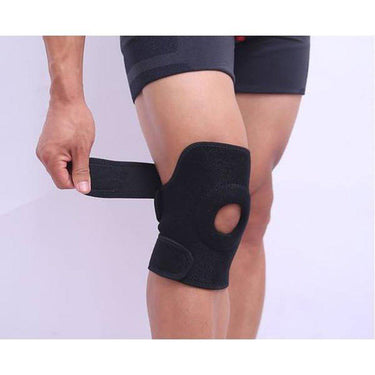
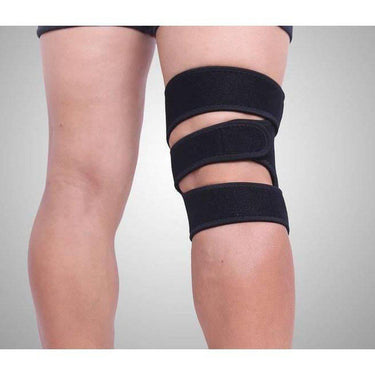
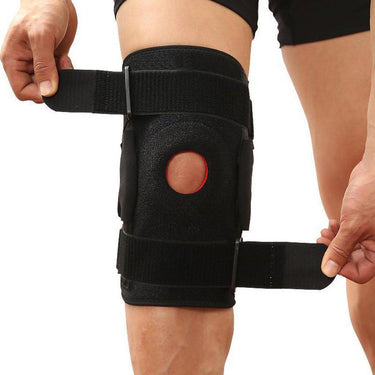
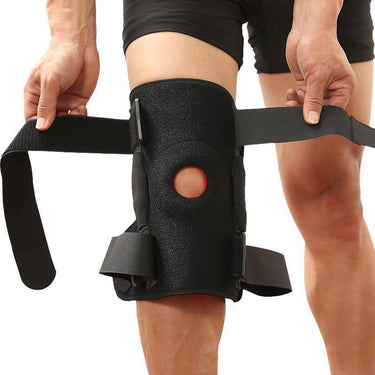
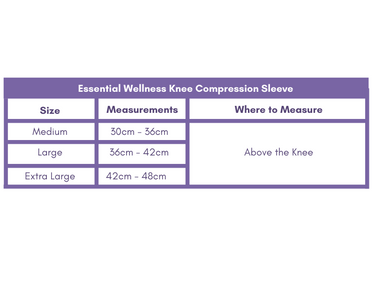
Pain Relief
Many people are reluctant to take pain killers, you might be one of them, but when flare ups strike they can be vital at helping you get through the first few days without taking to your bed. When you have a flare up it’s best to keep moving and not take to your bed, or the sofa and rest more that 24 - 48 hours, after this period the benefits of resting are outweighed by the loss of muscle and the stiffness that can begin to set into the knees.
It might be hard to believe you lose muscle after just 3 days of bed rest, we don’t recommend anyone takes to their bed unless completely necessary. This is where pain relief can come in handy. Whether you have already been prescribed something by your GP or if you can speak to your local pharmacist about pain relief, starting on a course for a few days of taking tablets to manage your flare up can be far more effective that waiting until you pain has reached a 10/10 unbearable score. Once your pain has reached this difficult level is quite unrealistic to take 2 paracetamol and expect a huge relief.
If you aren’t a fan of taking tablets, perhaps reserve these for your flare up times and talk to your local GP or pharmacist about how you can use them effectively to manage a flare up if you feel it coming and for the weeks afterwards. Many people with arthritis go through a boom and bust cycle of flare up and recovery, pain and relief, activity and inactivity. The goal of pain management is to use this as a tool to maintain our activity, keeping our bodies healthy and gradually, if we can. Build more activity and exercise into our routine over time. This is the opposite sentiment to racing out into the garden on our first summer’s day and doing 6 hours of gardening and no expecting to feel the consequences the following day!
Don’t forget pain relief for knee arthritis can also come in other forms, TENS is a non invasive treatment for pain relief taking advantage of the way the body uses nerves to send messages that are interpreted by the brain as pain. The TENS acts to interrupt these messages using different receptors so that you feel the TENS sensation rather than your pain.
Experiences of using TENS for pain relief in the knee varies from person to person in terms of success and tolerance so do seek medical advice before making this purchase.
Hot water bottle/ice pack
Another two items that can be invaluable for managing your symptoms during a knee arthritis flare up are hot and cold - mainly in the form of a hot water bottle and an ice pack. There is much debate on which should be used when and I usually try to keep it simple. What brings you the most relief?
Hot
If you feel that your knee is affected by cold, damp weather. That you wear extra layers to keep the joint warm, if you often feel stiffness in the joint or if you have a persistent deep ache that is unrelenting - try heat. Use a hot water bottle, wrapped in a towel to protect your skin and let it sit over the sore knee for 20-30 minutes. Try to move the knee gently from fully straight to fully bent (as pain allows) at the end of the time and free up any stiffness in the joint.
Heat can be a great easier of pain, and if you feel benefits from this, then good news there are other ways to incorporate this into your management - hydrotherapy, hot tubs, steam rooms and hot baths can all bring similar relief (please ensure that it is medically safe for you to use a steam room/sauna etc) your local physiotherapist or GP may be able to refer you to a hydrotherapy facility.
Cold
A great relief to those joints that feel warm to touch, that may also be swollen and stiff due to this. If you’re feeling that your joint feels warm then consider using an ice pack or most simply, a frozen bag of peas wrapped in a towel, for up to 20 minutes at a time. Similar to using heat, stretch and move the knee after applying the cold treatment. The key to healthy joints is movement so keep that going whenever you can. You may also find that it works well for you to use cold preemptively. That applying a cold pack after a day in the garden, on the trails or a session at the gym can help rehabilitate the joint and prevent any big reaction of the arthritis from the activity.
